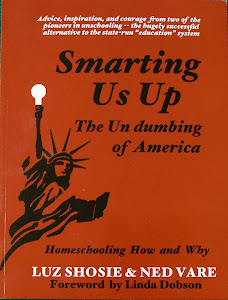First, we have the words of Armand Fusco, the former public school superintendent in two districts (MA and CT): "Public school is a culture of dishonesty and corruption." (see his book, "School Corruption, betrayal of children and the public trust," available at Amazon)
Next, we learn how schools determine space "needs" for students. These are devised by architects whose fees are based on the cost of projects built. The cost combines the amount of floor space and how luxurious (expensive) it is. Thus, the architects have incentives to design buildings that are larger and more expensive than are actually required. Certain architectural firms specialize in this practice. Often, no choice of architects is offered to the public. Also, contracts are sometimes let without a competitive bidding process.
Another factor is the "state space guidelines" for school construction. These are flexible, and depend on how much money the architects believe the particular town can afford for a new school building or addition. It often results in extravagant buildings with overly large classrooms, extra amenities, and lavish office spaces for employees, with expensive construction throughout. Waste is often the rule, we can be sure...hey, it's a government contract, paid for by taxes. We all are forced to pay the price.
Then come the teacher unions that bargain every year for more money and less work for their members. In my town, Guilford, CT, they have reduced the teaching requirements for teachers down to five periods out of an eight period school day. During the other three periods, the teachers claim "ownership" of their classrooms, keeping them for their own use, but empty of students. This results in about one third of all classrooms being empty of students for any given class period -- an outrageous waste of space.
That was the case in Guilford four years ago. "Overcrowding was claimed for the Adams Middle School with 37 classrooms. However, a "class loading schedule" revealed that over the course of each day, an average of twelve classrooms were unoccupied (except for an occasional teacher) during every class period. Thus, there was room for an additional 240 students in the building at any given time. Instead of overcrowding, there was an excess of classroom space, but inefficient use of the building. Amazingly, the "authorities" bought the teachers' stories, and spent $600,000 for six "temporary" classrooms to be built in the parking lot.
Class size enters into this equation, too. Smaller classes (thanks to union bargaining) means more teachers (union members) and less work for each one. It also means more classrooms -- all with extra square footage allowances -- for the same number of students.
If your district is making claims of "overcrowded schools," it might be wise to check up on how they make that claim.
Ned Vare is an architectural designer, author and artist. He was formerly a private school teacher, antique dealer, golf professional, elected official, rancher, and ski instructor.
Subscribe to:
Post Comments (Atom)


2 comments:
Great post!
It's funny how believable the "overcrowding" excuse is. It seems to make sense, with growing population and the same size school, there must be overcrowding.
But your revelation of inefficient use of existing space is interesting. It is part of a bigger trend in our society of nobody ever feeling that they have enough personal space or free time.
Objectively, you'd think that teachers could share their student-free time in a common area. (Maybe Ned, as a former teacher, you could comment on this part.) I'm picturing a space like a public library and a small office kitchenette in one. But at the same time, people somehow feel the need for time alone in large spaces, isolated from human contact.
All the while, this time alone does not cure the ailment that we wish it to address. It just makes us wish for more solitude. While if we were to engage our free time in more sociable activity with peers, it would make us want for more of the socializing.
This all reminds me of one of the "reasons" that people use for why to send kids to school: it is for "social purposes". But it turns out that the school is a place where the teachers engage in anti-social behavior as they keep to themselves during free time.
One more thing: imagine working for a regular company and insisting that 37.5% of your time was spent without the subject of your primary objective. Like a customer service representative that refused to answer phones for 3/8 of their shift, so they could have their personal time.
Keep it up, Ned!
Ned thanks for the post!
Post a Comment